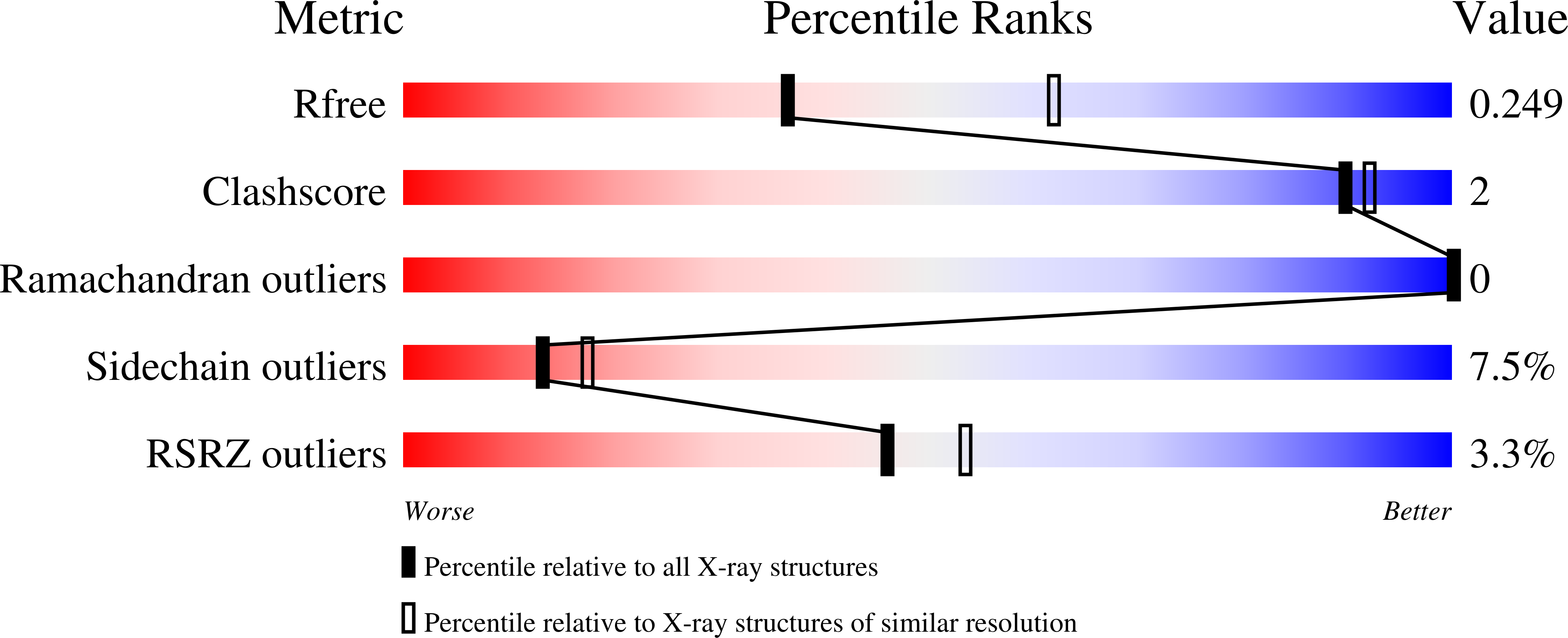Lectin-Like Bacteriocins from Pseudomonas spp. Utilise D-Rhamnose Containing Lipopolysaccharide as a Cellular Receptor.
McCaughey, L.C., Grinter, R., Josts, I., Roszak, A.W., Walen, K.I., Cogdell, R.J., Milner, J., Evans, T., Kelly, S., Tucker, N.P., Byron, O., Smith, B., Walker, D.(2014) PLoS Pathog 10: e1003898-e1003898
- PubMed: 24516380
- DOI: https://doi.org/10.1371/journal.ppat.1003898
- Primary Citation of Related Structures:
4LE7, 4LEA - PubMed Abstract:
Lectin-like bacteriocins consist of tandem monocot mannose-binding domains and display a genus-specific killing activity. Here we show that pyocin L1, a novel member of this family from Pseudomonas aeruginosa, targets susceptible strains of this species through recognition of the common polysaccharide antigen (CPA) of P. aeruginosa lipopolysaccharide that is predominantly a homopolymer of D-rhamnose. Structural and biophysical analyses show that recognition of CPA occurs through the C-terminal carbohydrate-binding domain of pyocin L1 and that this interaction is a prerequisite for bactericidal activity. Further to this, we show that the previously described lectin-like bacteriocin putidacin L1 shows a similar carbohydrate-binding specificity, indicating that oligosaccharides containing D-rhamnose and not D-mannose, as was previously thought, are the physiologically relevant ligands for this group of bacteriocins. The widespread inclusion of d-rhamnose in the lipopolysaccharide of members of the genus Pseudomonas explains the unusual genus-specific activity of the lectin-like bacteriocins.
Organizational Affiliation:
Institute of Infection, Immunity and Inflammation, College of Medical, Veterinary and Life Sciences, University of Glasgow, Glasgow, United Kingdom.















